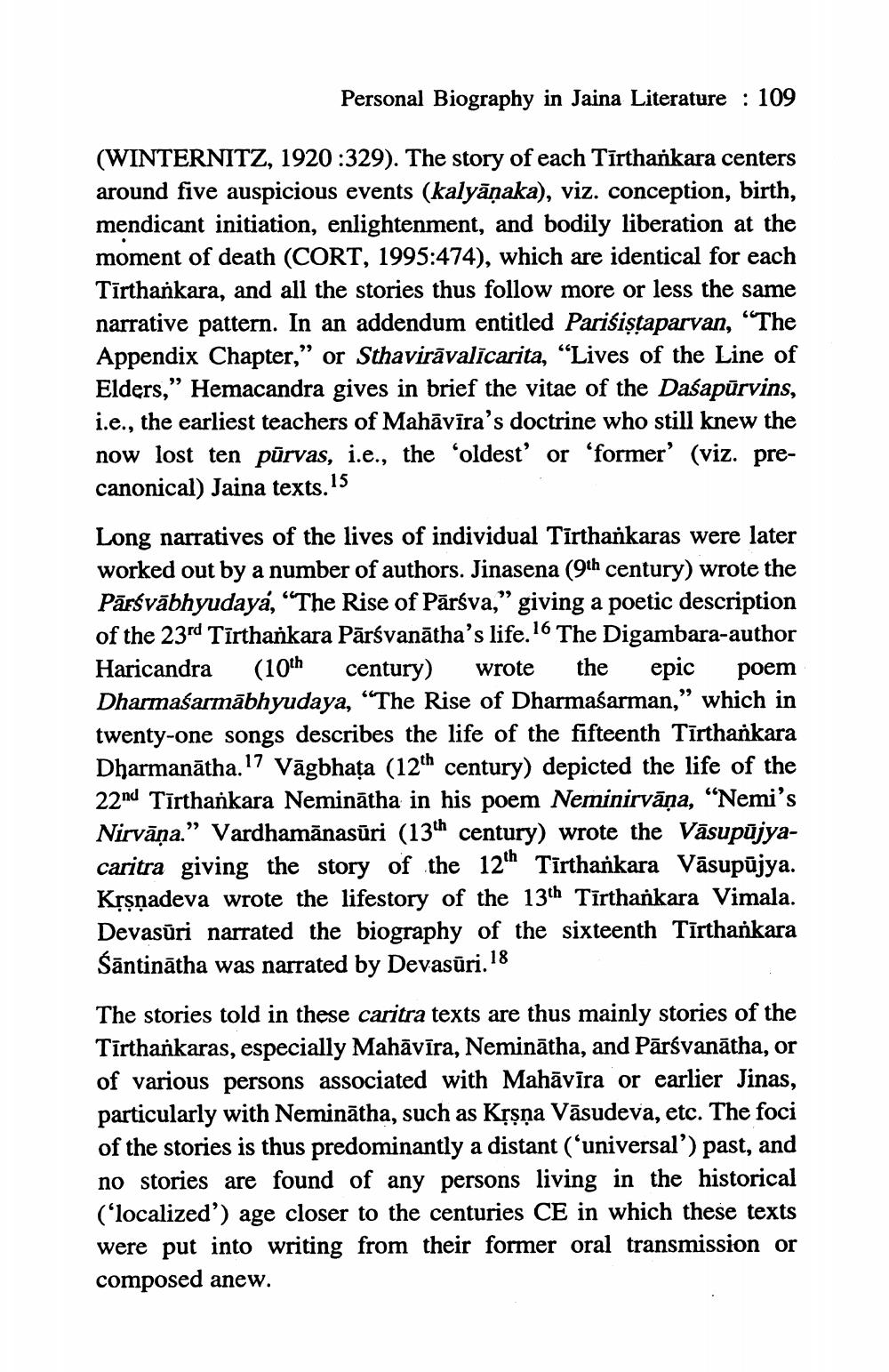________________
Personal Biography in Jaina Literature : 109
(WINTERNITZ, 1920:329). The story of each Tīrthankara centers around five auspicious events (kalyāņaka), viz. conception, birth, mendicant initiation, enlightenment, and bodily liberation at the moment of death (CORT, 1995:474), which are identical for each Tīrthankara, and all the stories thus follow more or less the same narrative pattern. In an addendum entitled Parisistaparvan, “The Appendix Chapter," or Sthavirāvalicarita, “Lives of the Line of Elders,” Hemacandra gives in brief the vitae of the Daśapūrvins, i.e., the earliest teachers of Mahāvīra's doctrine who still knew the now lost ten pūrvas, i.e., the oldest' or 'former' (viz. precanonical) Jaina texts. 15 Long narratives of the lives of individual Tīrthankaras were later worked out by a number of authors. Jinasena (9th century) wrote the Pārsvābhyudaya, “The Rise of Pārsva,” giving a poetic description of the 23rd Tīrthankara Pārsvanātha's life. 16 The Digambara-author Haricandra (10th century) wrote the epic poem Dharmaśarmābhyudaya, “The Rise of Dharmaśarman,” which in twenty-one songs describes the life of the fifteenth Tīrthankara Dharmanātha. "7 Vāgbhața (12th century) depicted the life of the 22nd Tīrthankara Neminātha in his poem Neminirvāņa, “Nemi's Nirvāņa.” Vardhamānasūri (13th century) wrote the Vāsupūjyacaritra giving the story of the 12th Tīrthankara Vāsupūjya. Krşņadeva wrote the lifestory of the 13th Tīrthankara Vimala. Devasūri narrated the biography of the sixteenth Tīrthankara Šāntinātha was narrated by Devasūri.18 The stories told in these caritra texts are thus mainly stories of the Tīrthankaras, especially Mahāvīra, Neminātha, and Pārsvanātha, or of various persons associated with Mahāvīra or earlier Jinas, particularly with Neminātha, such as Kļşņa Vāsudeva, etc. The foci of the stories is thus predominantly a distant (ʻuniversal') past, and no stories are found of any persons living in the historical ('localized') age closer to the centuries CE in which these texts were put into writing from their former oral transmission or composed anew.




